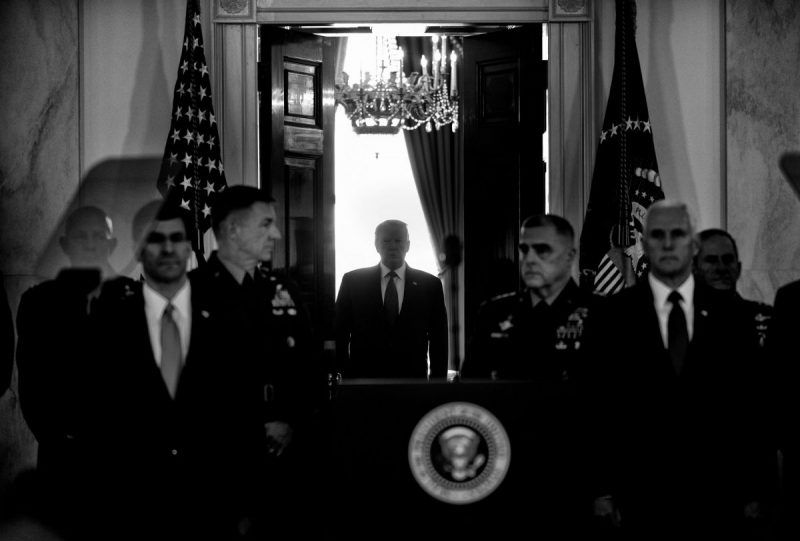
After a few days of quiet, Iran carried out its promised âsevere revengeâ for the United Statesâ killing of Maj. Gen. Qassim Suleimani last week.
On Wednesday morning in the Middle East, Iranâs Islamic Revolutionary Guard Corps launched 22 missiles at two American-run bases in Iraq. The attack was symbolically significant but resulted in limited damage and no loss of life. It demonstrated Iranâs ability to hit American assets in the region, but was calculated to give President Trump an off-ramp from escalating tensions into an all-out war.
Thankfully, he seems ready to take it. But even if war was avoided this time, heightened tensions and sporadic attacks will be the new normal in the Middle East.
The killing of General Suleimani surprised Iran experts. While as the head of the Revolutionary Guardsâ special operations unit, the Quds Force, the general was certainly a threat to the United States, no previous administration had wanted to risk the potentially high cost of taking him out. When President Trump did, it set off fury among Iranâs leaders â and much of the Iranian population. Tehran could not let the assassination of one of its most senior and popular officials go unpunished.
Still, it seems that the attack on Wednesday was intended as a warning rather than real retribution. Prime Minister Adel Abdul Mahdi of Iraq said that Tehran had warned him that the missiles were coming; reports say he passed that information on to American and Iraqi troops, as the Iranian military probably expected. The Iranians, with their sophisticated intelligence operations in Iraq, were also likely well aware of the layout of the bases that they hit, and knew American troops would be able to take cover from the rockets. All of this suggests that the Iranians wanted to minimize casualties, even as they projected strength.
In a move that departed from their usual modus operandi of covert action and deniability, the Revolutionary Guards claimed responsibility for the attacks. Each wave of strikes was widely publicized â in one instance, even before the strikes were carried out. In addition, over the weekend, rumors emerged that Iran was mobilizing some of its missile forces. Moving missiles is visible and suggests that Iran intended to send a message that something was in the works, giving Washington a chance to prepare.
The Iranian leadership was not blundering. These were signals: We are âescalatingâ because we cannot allow a brazen assassination to go unpunished, Iran seemed to say, but we are ready to de-escalate.
Tehran knows that it cannot win an all-out war against the United States, which is why it took this gamble. By minimizing casualties, the Iranian leadership hoped to limit the American response. The officials in Tehran know, of course, that Mr. Trump has repeatedly said he wants to avoid getting bogged down in a war in the Middle East. Iranâs foreign minister, Mohammad Javad Zarif, added that the Iranâs strikes were in âself-defenseâ and âproportionate,â indicating Tehranâs desire to halt further fighting.
It seems to have worked. Speaking in Washington on Wednesday morning, Mr. Trump said that Iran was âstanding downâ and even suggested that he was willing to negotiate with Tehran. The lack of American casualties allows him to save face, too.
But even if the United States and Iran avoid direct confrontation this week, this isnât the end of their hostilities.
The uptick in tensions â Iranâs attacks on Aramco oil installations in Saudi Arabia last September, the assassination of General Suleimani, and the missile strikes in Iraq â marks the start of a new phase in American-Iranian relations and Middle Eastern instability.
Iran is patient, famous for playing the long game. It has vowed to continue avenging General Suleimaniâs death. Tehranâs goal of ridding the Middle East of American troops hasnât changed, and President Hassan Rouhani made that clear, stating Iranâs âreal revenge and the ultimate response by regional nations is when America is expelled from this region and its hand of aggression is cut off forever.â Americans in the Middle East are still at risk, and will be for a long time to come.
After the initial shock of the past weekâs events wears off, there will be a return to a sustained pace of sporadic attacks, likely with greater intensity than before. Bases, assets and shipping in Iraq and the Persian Gulf will all be considered fair game. Cyberattacks against American computer systems and infrastructure are also likely to increase. And donât expect a resolution soon. Despite Mr. Trumpâs supposed willingness to negotiate, itâs unlikely: There is much bad blood and few channels of communication.
Meanwhile, it is once again the people of the Middle East who will be caught in the crossfire as the United States and Iran refuse to back down.
Dina Esfandiary is a fellow at the Century Foundation and the co-author of Triple Axis: Iranâs Relations With Russia and China.
